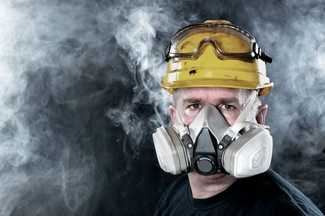Protecting yourself from on-the-job disease
 People often mistakenly assume that workers’ compensation is tied only to on-the-job accidents resulting in serious injuries. In fact, workers’ compensation claims can center on either injuries or illness – sometimes a combination of both.
People often mistakenly assume that workers’ compensation is tied only to on-the-job accidents resulting in serious injuries. In fact, workers’ compensation claims can center on either injuries or illness – sometimes a combination of both.
It is not uncommon for employees in numerous industries to work with hazardous or toxic materials for hours, days or even years. This level of contact can lead to health challenges or even deadly diseases.
What Should You Look Out For?
The National Institute for Occupational Safety and Health (NIOSH) has grouped priority research areas into categories of adverse health effects. While the categories group both disease and injury, we will only examine the illnesses.
- Allergic and irritant dermatitis: Otherwise referred to as “contact dermatitis,” this is the most significant cause of all reported occupational skin diseases. Workers in nearly every occupation and industry face the possibility of exposure to diverse agents that cause allergic and irritant dermatitis. From potentially harmful chemicals in the workplace to a latex allergy, workers must be aware of changes in their body and report any irritant or rash.
- Asthma and chronic obstructive pulmonary disease (COPD): The NIOSH cites data that estimates nearly 30 percent of COPD and adult asthma cases may be attributable to occupational exposure. These occupationally-related airway diseases can be life-altering in their scope. More research is required to refine techniques for monitoring worker health in such disparate work environments.
- Fertility and pregnancy abnormalities: According to NIOSH data, more than 1,000 workplace chemicals have shown reproductive effects in animals. Unfortunately, most of these have not been studied to any great detail on human subjects. Essentially, there might be millions of chemical mixtures in the workplace negatively impacting fertility or leading to pregnancy abnormalities.
- Hearing loss: While it is common for hearing loss to follow an accident such as an explosion, it is far more likely for this condition to develop gradually over time. Lengthy exposure to ototraumatic agents damage a worker’s hearing capacity or lead to complete hearing loss. While noise is an important factor, solvents, metals, asphyxiants and heat might also be elements in occupational hearing loss.
- Infectious diseases: Different environments pose different threats for workers. A health care worker, for example, might find themselves at risk for tuberculosis, hepatitis B, hepatitis C or HIV. By the same token, laboratory workers are at risk for exposure when handling infective materials. Safety protocols and protective gear are at a premium when infectious diseases are a possibility.
Unfortunately, it is not uncommon for workers to ignore symptoms and simply not report a workplace illness. Many individuals might assume that a rash is more the result of yardwork than a powerful solvent that was spilled at work. If you or a loved one has suffered a work injury or disease, it is crucial that you discuss your situation with skilled medical and legal professionals.
